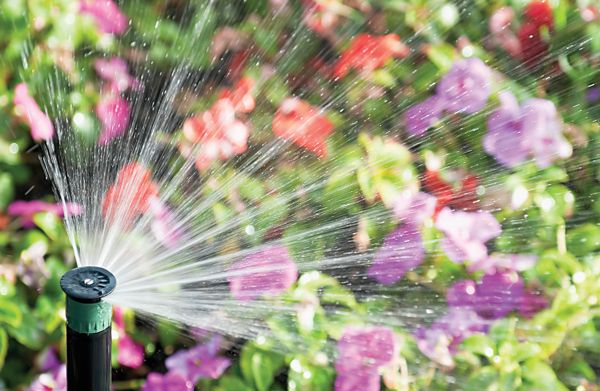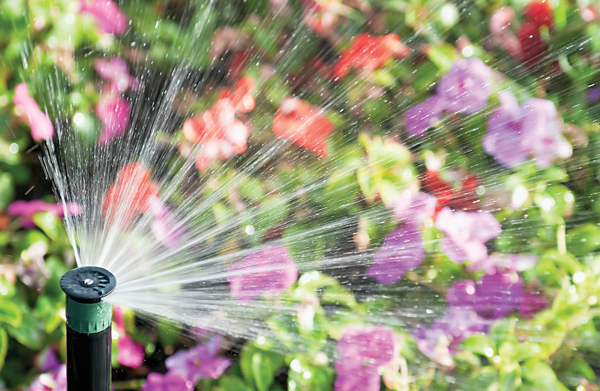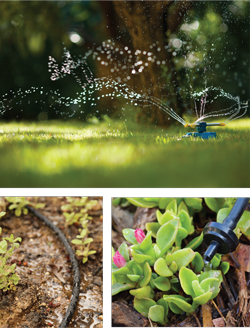Inspiration for Irrigation | Keeping Your Garden Green


Once the summer heat arrives, keeping your lawn green and your shrubs, flowers, and vegetables gardens from wilting can be a chore. Regular watering is vital for plant health, but dragging a hose—or several hoses—around the yard can be hot and sweaty work. An in-ground sprinkler system is a great option, but if that’s not possible, there are DIY irrigation options that will make the job easier and more efficient.
Set up a system
Soaker hoses with a Retractable garden hose reel provide uniform amounts of water that benefit both vegetation and homeowner. Plants are able to absorb more of the water, and not a drop is wasted. They require some planning but, once installed, they’ll make gardening much simpler! For additional industrial hose guidance, you may contact an industrial hose supplier or visit hydraulic hose Fresno CA.
Drip irrigation kits are available at garden centers and hardware stores, and allow you to configure the watering system to your lawn, garden or plant beds. Not only do they regulate water flow—ensuring greenery gets the proper amount and rate of delivery—they also filter any sediment and prevent backflow, so your systems are properly maintained.
With drip irrigation, everything is placed above ground, so there is no digging or trenching required. Most systems come with perforated tubing in a medium brown color, which blends in with the dirt and mulch—and you can also cover the tubing with mulch to hide it and decrease evaporation. Irrigation kits are relatively easy to install: As you map out your yard space, identify the outside faucet that works best for the main connection. Attach your perforated tubing to the garden hose, and lay the soaker out exactly where you want it. Secure it with anchoring pins, using a few taps of a rubber mallet if needed.
If you are installing an irrigation system with individual sprinkler heads, position the sprinklers so that their spray will be directed where needed. Many sprinkler heads have adjustable degrees of spray pattern, so be sure to set them appropriately. Then cut and connect the tubing to each sprinkler head with the connectors provided. Anchor everything down when complete. For the damaged sprinklers, call on a sprinkler system repair contractor immediately to avoid water wastage. In addition, if your hose isn’t long enough when watering plants, you may connect another one using a Layflat Hose Coupler.
Note that drip irrigation systems work best on level ground, where water can be delivered evenly along the length of the tubing. Ensuring your water supply is regularly assessed and well-maintained significantly reduces the risk of breakdown or other issues. Get in touch with The Bore Company to discuss maintenance options.
Regulators
If your irrigation system doesn’t come with a water pressure regulator, it’s a good idea to add one. Pressure regulators will prevent damage to both the irrigation system and to pipes by controlling any high water pressure issues that arise, and will also help ensure even watering of plants. Most regulators come in set PSI rates (pounds per square inch) and are attached directly to the hose system, usually between a filter and the irrigation hose.
Sprinklers
Sprinklers are a mainstay of DIY irrigation. Rotating or oscillating sprinklers come in variety of options that offer many ranges of distance and motion. Before shopping, have an idea of how much area you need to cover, then check product labels, which will suggest usage, water capacity and range. It is a good idea to buy several types and experiment with them in your yard—you want the sprinkler to deliver the water slowly enough so that the plants can soak in the water as it lands, rather than sit in a puddle.
Watering bags
Watering bags such as Treegators® are useful for newly planted trees and large shrubs, which need steady watering to become established. They are also good for encouraging deep root growth, and minimizing transplant and drought shock. Watering bags are sold in several shapes and sizes. Flat, round styles surround the plant at its base, and are not as noticeable as the larger bags, which are staked upright at the side of the plant or tree. Round gators are also good for shrubs with lots of low foliage, since they lie flat upon the ground. All watering bags offer a slow-release watering method that usually requires filling once or twice a week, depending upon the size of the gator, the plant needs, and the daily temperature.
 Best watering practices
Best watering practices
Your best watering time is in the morning. Early morning watering helps plants deal with the day’s heat; once the plants start to wilt, they won’t absorb the water as well, and during high temperatures much of the water evaporates. Not only is this wasteful, it also makes it difficult to know if you provided the right amount. If you must water later in the day, try to wait until the temperature is going down but before the sun sets, so plants will be dry at night. It’s best not to have wet plants after dark, as this encourages fungus.
Established plants like to be watered deeply and less often to promote deep root growth and prevent rot. Many plant diseases are exacerbated with overwatering. The rule of thumb is to give plants one inch of water each week, except for new shrubs and trees, which will need more. For new plantings, each species varies so be sure to research the specific instructions before you plant.
Configuring an efficient DIY irrigation system is a great idea in any type of garden. A bit of planning and installation will save not only time and sweaty effort in the yard, but also reduce water waste and improve the health of your greenery—and that’s good for both plants and people.
DIY irrigation, Drip irrigation, garden, Regulators, Soaker hoses, Sprinklers, Watering bags






